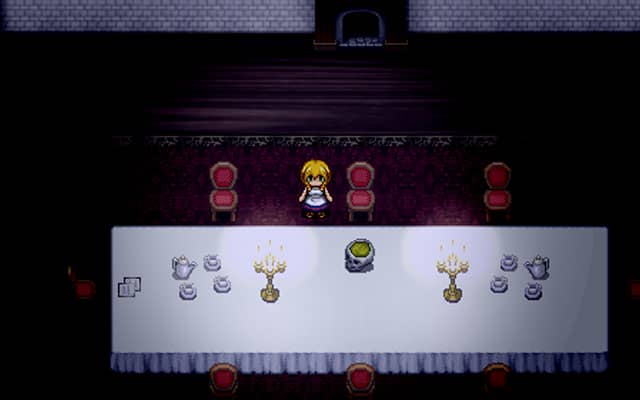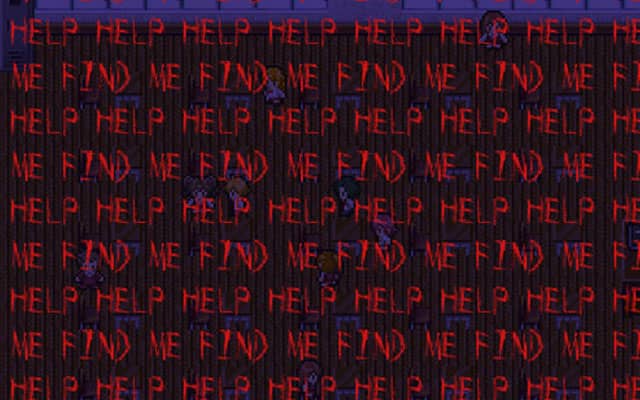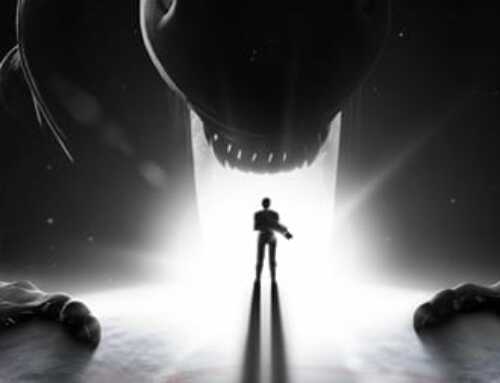Last week, we took a look at the Yume Nikki sequels made by fans of the original game. However, those are far from being the only games that Yume Nikki inspired. There are, in fact, a whole host of other games which draw from Yume Nikki without adhering strictly to its formula the way that the fan-sequels do. As I mentioned in the first column of this series, Yume Nikki was not the first RPG Maker horror game. However, unlike the games that came before it Yume Nikki developed a cult following that went on to create more games in a way that previous RPG Maker horror games did not. In fact, Yume Nikki created a sort of do-it-yourself horror gaming scene (primarily in Japan, but in other countries as well).
Yume Nikki was a very slow-paced game. It was all about gradual exploration. While many of the games retained this, there were some that broke it in rather interesting ways. Some, such as “Mermaid Swamp” have one or two small action-oriented sections, while others like “Misao” rely a lot on reflex and figuring out where deadly traps may be lurking. I think that the most interesting subversion of this expectation comes in the game “Witch’s House.” You see, “Witch’s House” starts off with that slow pace. At first it’s all about exploring the woods and then the strange house tucked away therein. However, the game then switches that up on the player. After getting accustomed to the slow exploration, the player suddenly finds themselves pursued by a monster. This kind of sets the tone for a lot of what goes on in “Witch’s House.” The player is thrown back and forth between reflex-based gameplay and more traditional “Yume Nikki” style exploration. By constantly bouncing back and forth between these extremes, the game keeps the player constantly on edge. It uses the player’s expectations about what kind of game it is against them, and that is brilliant.
These games also tend to be much more narrative-focused than Yume Nikki was. In many ways, this is their strongest attribute. Most of the fan-sequels floundered in their attempt to recapture the lightning in a bottle that was the abstract story-telling of the original Yume Nikki. So some games, such as “Mermaid Swamp” choose instead to focus most of their effort on telling a truly unsettling story. Some, again such as “Mermaid Swamp” even include multiple endings to encourage repeated play throughs. Then there are games like “OFF” (one of the games from outside of Japan, “OFF” comes from France) which incorporate the surrealism of “Yume Nikki” while still having a more definite story. Not all of these games have great stories (“Witch’s House” in particular has a lack-luster conclusion), but this is where most of these games shine.
An interesting note, though: despite being made in RPG Maker, almost none of these games include RPG elements. Like Yume Nikki itself, the games it spawned tend to be adventure games (or occasionally, clumsy 16-bit action games) rather than RPGs. The only notable exception to this is “OFF,” which eschews most of the trappings of Yume Nikki to create an 8-bit RPG. I find this particularly interesting because while playing Yume Nikki (or “.flow” or any of the other games that came after), I kind of felt like the RPG element of “RPG Maker” had been lost. While games like “Ib” and “The Crooked Man” played around with or flat out ignored the basic formula that “RPG Maker” provided, “OFF” actually made something of it. So there is this disconnect between most of the games that “Yume Nikki” inspired and the more RPG focused games, because they cannot seem to settle on what the right amount of RPG should be in an RPG Maker game.
As you can see, there were a lot of freeware projects inspired or fueled by Yume Nikki. Not all of them were successes. However, even when the games struggle a bit, it is worth checking them out to see how they adapted their inspiration into something new. There is enough variety in these games that one could keep playing them for months without ever having to pay for a single one.









